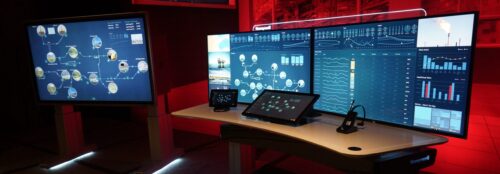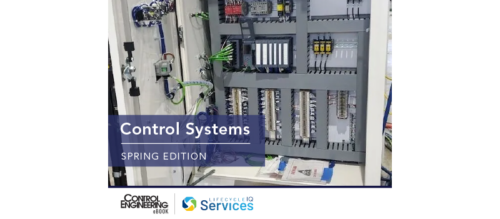‘Radical Solutions’ Deliver Rewards
For the past 13 years, TEC Engineering of Wichita, KS has been working with a major salt producer to completely overhaul its networking, controls and software technologies. Replacing a disparate collection of relays and single-loop controllers with a fully integrated PLC-based control system, TEC is helping the company improve the efficiency and operation of its evaporation, dry salt, and packa...
At A Glance
Early Ethernet adoption
Rapid ROI
Increased productivity and reduced costs
For the past 13 years, TEC Engineering of Wichita, KS has been working with a major salt producer to completely overhaul its networking, controls and software technologies. Replacing a disparate collection of relays and single-loop controllers with a fully integrated PLC-based control system, TEC is helping the company improve the efficiency and operation of its evaporation, dry salt, and packaging processes.
One of the motivating forces behind the overhaul was that each plant location had followed its own path toward achieving company-encouraged efficiency and productivity gains. This created an environment of multiple, unmanageable control systems, higher implementation costs, and little or no sharing of resources between locations. Even transferring personnel from site to site was hampered by lack of consistency.
Creating a unified approach across the entire enterprise required TEC Engineering to develop solutions which were, at the time, considered somewhat radical. The client assembled an automation team comprised of representatives from all areas of the company, including both plants and mines, to ensure that the solution would be embraced across the entire organization. The first order of business: to standardize on a common communication and automation architecture. After much research and a complete “risk vs. reward” analysis involving both the plant operations and information technology (IT) departments, the team decided that upgrading all plant networks to a standard Ethernet architecture would be TEC’s first priority.
This was in 1994, and choosing an Ethernet communications architecture for an industrial network was a very aggressive decision. Ethernet was still considered a front-office technology, and bringing plant operations and IT departments together to agree on an Ethernet-based approach was critical.
Once the communication infrastructure was in place, the next step was to develop a controller/HMI hardware strategy. This too needed to be a team decision, as the choices would become standard across the enterprise. After an exhaustive evaluation process, TEC recommended and the client approved Rockwell Automation PLCs and Intellution (now GE Fanuc) HMIs connected directly to the Ethernet backbone.
For the next decade, TEC worked on automating each location’s operations, reducing the need for operator supervision in many areas from several individuals to just one. Operators could even log in to remote HMI stations using a personal digital assistant (PDA) and off-the-shelf remote access software. The resulting productivity improvements and reduced headcount simultaneously increased the client’s yearly salt output and lowered operating costs.
Streamlining the automation system has simplified maintenance and upgrade operations as well. All changes to the approximately 200 PLCs and 150 HMI stations can now be made directly from TEC’s main office. As a result, TEC can remotely handle all operating system patching, address security measures, and perform license reconciliation for the HMI stations.
The client has also benefited from the standardization of the control systems by reducing purchasing costs and simplifying operator training. Transferring personnel between locations no longer results in lost productivity. Re-using computer code has reduced implementation costs, which has enabled the client to achieve a timely net return on investment.
TEC is currently tasked with standardizing the approximately 20 packaging systems across all plants in order to measure, monitor and improve overall equipment effectiveness (OEE) using software tools from Informance International. Ensuring that the client retains its competitive advantage, TEC has also instituted a technology advancement team to determine how to get the most out of the automation systems that are in place, as well as to evaluate which new technologies can be added to further enhance productivity and process improvements. For example, the team has recently added a data historian and associated dashboard tools from OSIsoft, delivering an opportunity to gain greater insight into the day-to-day operation of the plants and the business as a whole.
ONLINE
www.tecsystemsgroup.com
www.rockwellautomation.com
www.gefanuc.com
www.informance.com
www.osisoft.com
Do you have experience and expertise with the topics mentioned in this content? You should consider contributing to our CFE Media editorial team and getting the recognition you and your company deserve. Click here to start this process.





